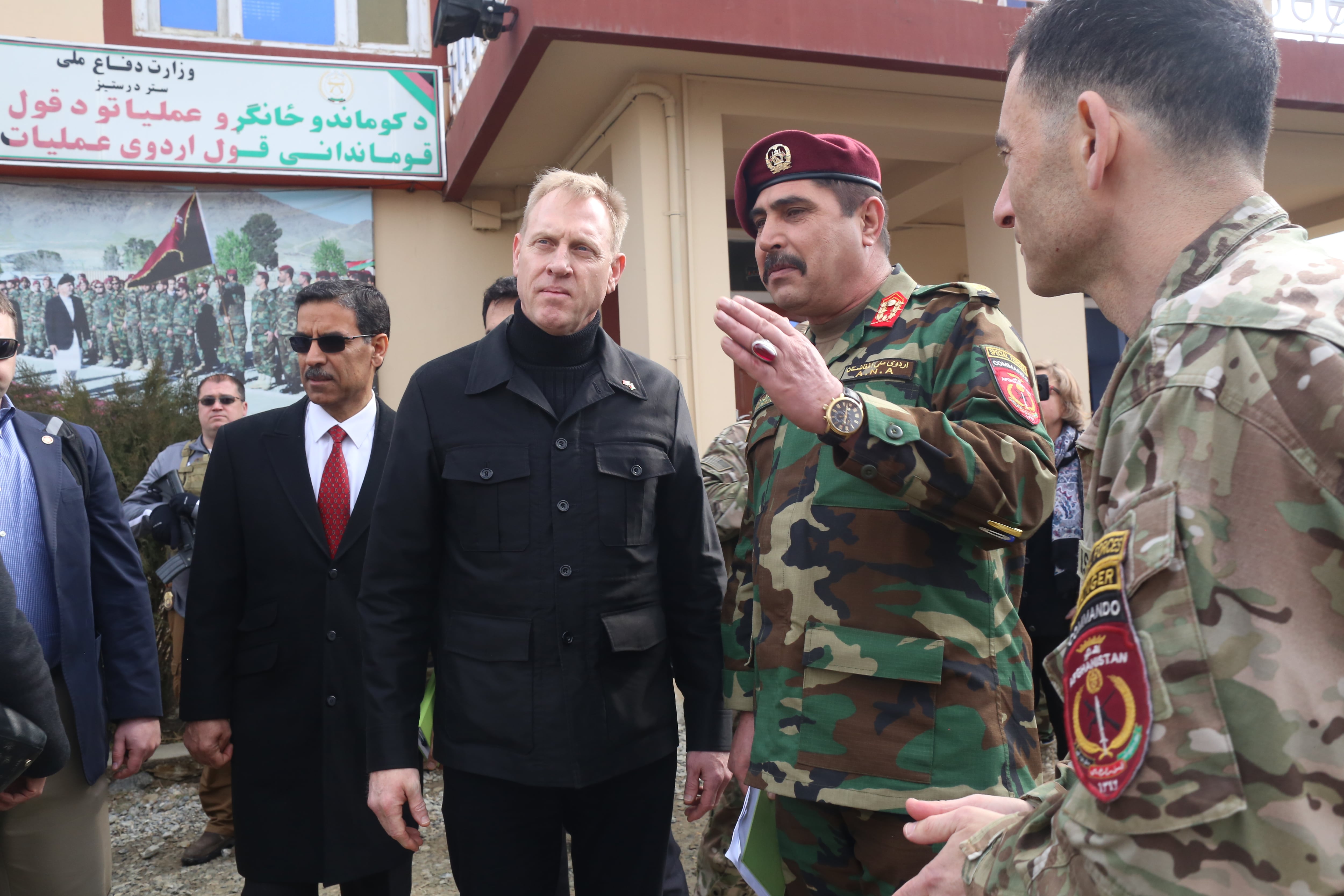Correction: The original fiscal 2017 and 2018 budget numbers in this story were erroneous and have since been corrected.
WASHINGTON — Ahead of the White House’s fiscal 2020 budget submission, expected next month, there’s been a solid push for diplomacy and development spending, and it’s coming from, well, the Defense Department.
The top uniformed officers who head U.S. Central Command, U.S. Indo-Pacific Command, U.S. Southern Command and U.S. Africa Command have offered over the last few weeks fodder to lawmakers who argue U.S. foreign policy cannot thrive on military might alone, and that a full State Department budget is vital to national security.
In Afghanistan, for example, President Donald Trump’s year-old South Asia strategy — which involves military and diplomatic pressure to leverage a U.S.-Taliban peace deal — is working, CENTCOM’s Gen. Joseph Votel told the Senate Armed Services Committee earlier this month. (The plan’s not without its critics and U.S. lawmakers have warned against a hasty withdrawal.)
“We recognize this conflict will not be resolved solely by military force, but our military pressure serves as an enabler through a whole-of-government process and more directly supports diplomatic efforts led by Ambassador [Zalmay] Khalilzad,” Votel said.
All the remarks are in the public record, but excerpts were compiled by the U.S. Global Leadership Coalition, which advocates to protect the international affairs budget to enhance national security. Ahead of the administration’s budget release, expected March 12, USGLC shared its excerpts, as it’s previously done.
RELATED

AFRICOM’s Gen. Thomas Waldhauser offered a laundry list of diplomatic and development initiatives Feb. 7 in testimony to the Senate Armed Services Committee. The regional combatant command’s activities, he said, “directly complement Department of State and [U.S. Agency for International Development] efforts to reduce the spread of harmful ideologies, strengthen governments who protect their citizens, and foster security and economic successes.”
“First, very few, if any, of Africa’s challenges can be resolved using only military force. Consequently, U.S. Africa Command emphasizes military support to diplomacy and development efforts,” Waldhauser said.
China’s investments through its One Belt, One Road initiative, an economic policy that seeks to connect Eurasia to China, are developing relationships that go beyond the military’s defensive mission, the officers said.
Indo-Pacific Command’s Adm. Philip Davidson said the U.S. must proactively promote its values “in the diplomatic and the information space, as well as the economic space, quite briskly because China is spreading dollars around very perniciously through corruption ... and we’ve got to be willing to work in these other realms.”
Both Davidson and SOUTHCOM’s Adm. Craig Faller touted the importance of foreign military financing — an area targeted by previous Trump budgets — which provides grants and loans for countries to purchase U.S. defense equipment, and International Military Education and Training, a program under which foreign officers attend U.S. military schools. The program is a favorite of SASC Chairman Jim Inhofe, R-Okla.
This security assistance spending, Faller said, represents "lifelong relationships with future leaders who trust us, understand our culture and doctrine, and are prepared to work with us on a range of challenges.”
Behind closed doors, there’s historically been a tug of war between the Defense Department, which Congress has favored with budgets and authorities, and the State Department. James Jeffrey, the U.S. envoy to Syria, lamented in 2017, before he had the job, that the Pentagon “has won budgets for supporting foreign forces, counterterrorism, and other military partner activities traditionally largely under State. The Pentagon also is active in State and USAID areas such as counternarcotics, foreign police training, and at times even local economic and capacity building.”
It’s unclear what role the public defense from officers will play in lawmakers’ deliberations. The State Department’s spending plan under the Trump administration isn’t public yet, but there is a pattern of Congress reversing cuts to development and diplomacy proposed by Trump.
In 2017, Trump proposed $40.1 billion for his inaugural international affairs budget, and Congress enacted a $55.9 billion budget. For fiscal 2018, Trump proposed a $42.2 billion international affairs budget, and Congress approved $56.1 billion.
It’s telling that one of the key advocates for budget discipline at the State Department and USAID, Brett Schaefer of the Heritage Foundation, anticipates this pattern will continue in the FY20 budget cycle. By his reckoning, the administration has long since fumbled its opportunity for an exhaustive reexamination of budgets, which have been “on autopilot for years,” he said.
Not only is Congress unlikely to tackle the issue, but the administration is unlikely to do so. Then-Secretary of State Rex Tillerson’s attempts damaged morale at the State Department such that his successor, Secretary of State Mike Pompeo, has reportedly backed off the effort.
The Senate Foreign Relations Committee has passed State Department authorization bills for three years in a row. However, Schaefer argued, the State Department isn’t called upon to justify its budget growth and show how more spending yields better results.
“It is certainly possible State Department and USAID budgets are 100 percent the best, but we don’t know that because Congress and the administration haven’t engaged in a real thorough analysis,” Schaefer said. “You get platitudes and not that exhaustive top-to-bottom look. Are we getting value for the increases that have been implemented? If so, show the American taxpayer.”
Joe Gould was the senior Pentagon reporter for Defense News, covering the intersection of national security policy, politics and the defense industry. He had previously served as Congress reporter.







